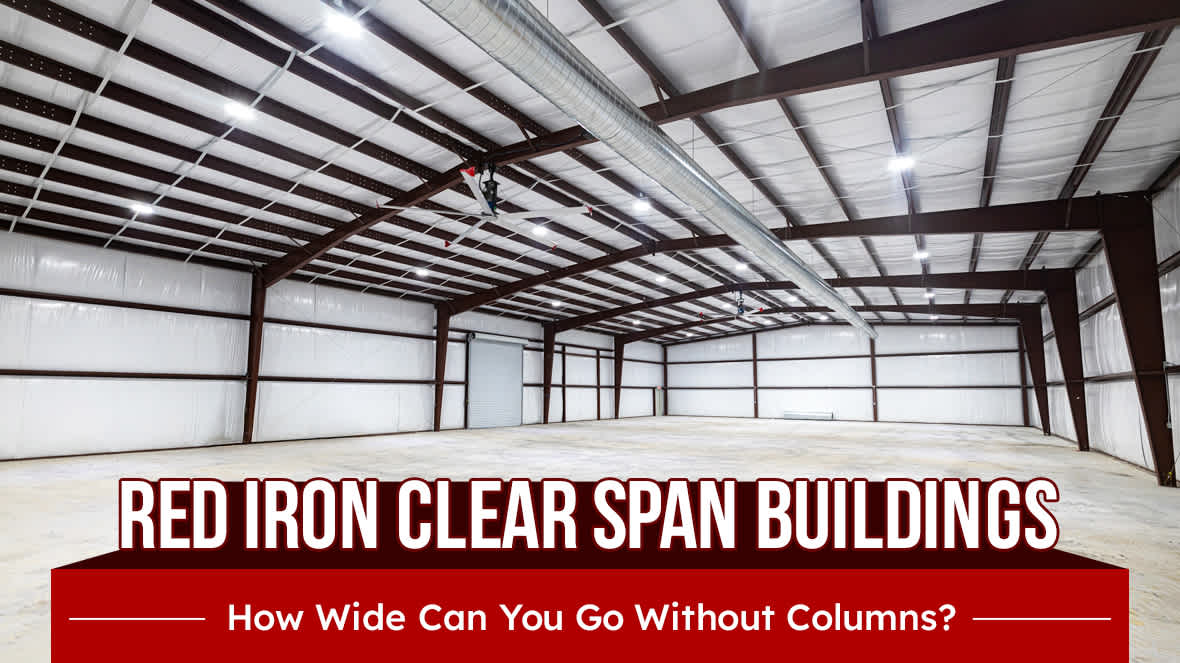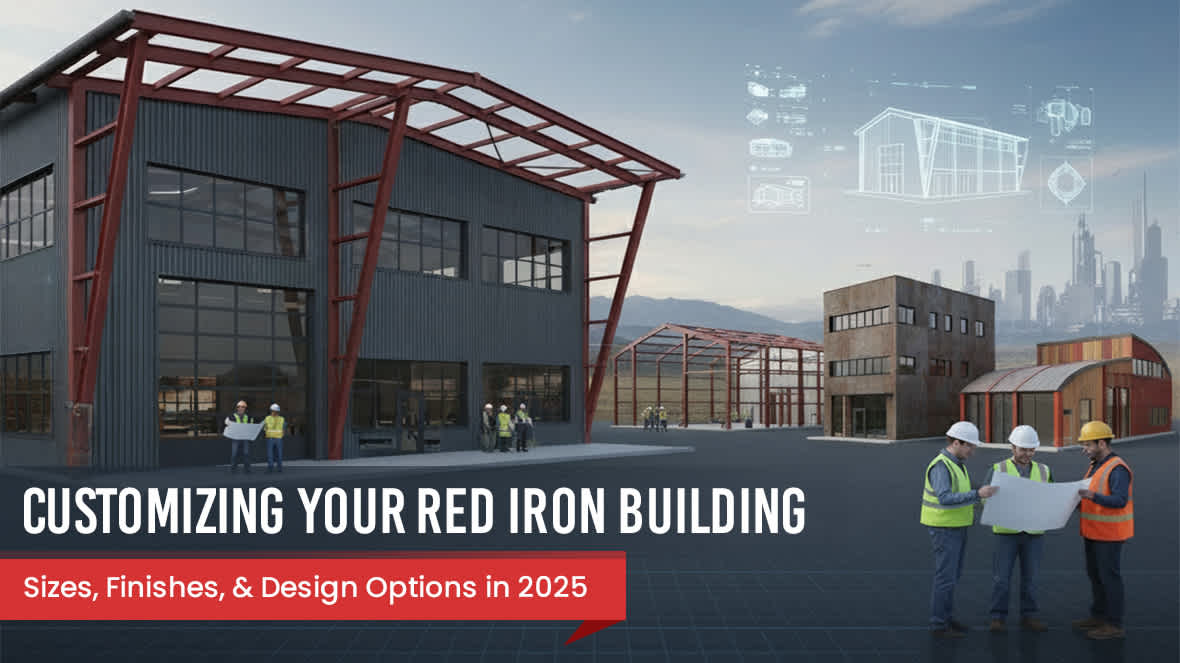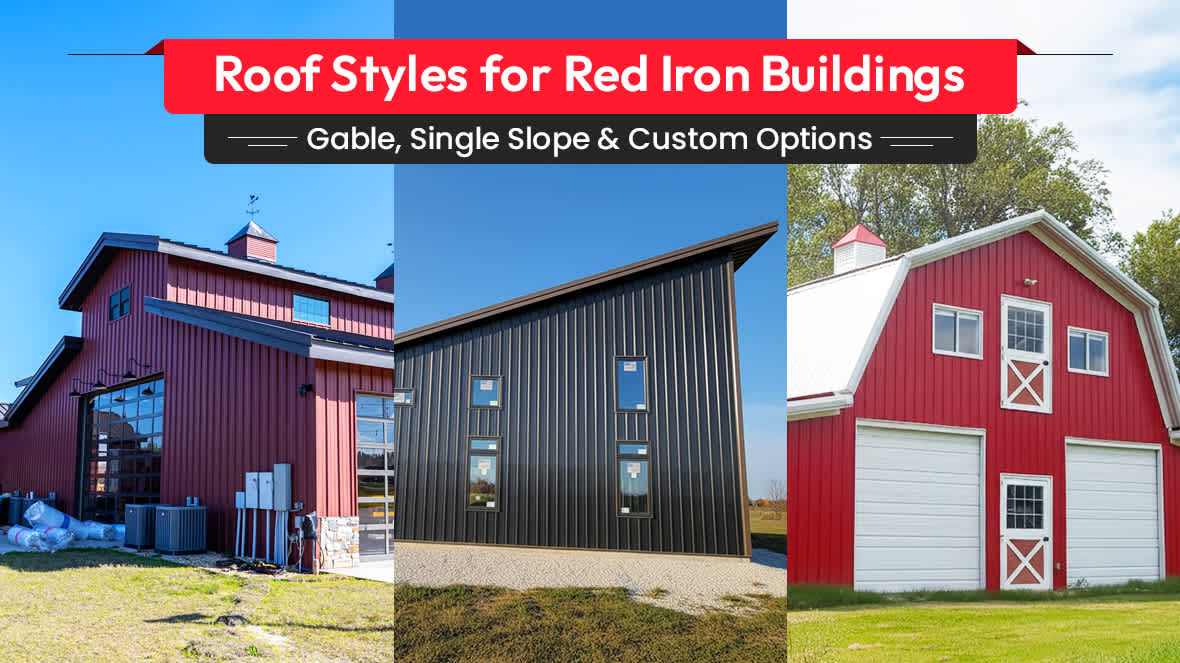
Red Iron Clear Span Buildings: How Wide Can You Go Without Columns?

TL;DR: Clear span red iron buildings provide wide, open space with no interior columns, making them ideal for farms, warehouses, arenas, and hangars. Ranging from 40 to 300 feet wide, they’re durable, customizable, energy-efficient, and built to last, with ProSpan offering expert design, warranties, and financing.
Going Wide Never Looked So Good
Walk into a warehouse, an indoor riding arena, or even a big farm shop, and you'll notice something right away: wide, open space with no columns in the way. That's the magic of a clear-span building. They’re a go-to solution for residential jobs, agricultural operations, and even commercial projects. With a clear span red iron building by your side, you can move equipment around without dodging posts, set up sports courts, or park planes without worrying about support beams in the middle.
The big question, though, is: how wide can you actually build one of these red iron structures before you hit the limit? That’s a great question to ask, and today, we’ll do just that.
What is a Clear Span Building?
In simple terms, a clear span building is a steel structure that leaves the entire interior wide open. Instead of using columns inside to hold up the roof, the strength comes from the steel I-beams and the way they’re engineered across the span.
This setup gives you freedom to use the space however you want. Farmers can back in tractors without weaving around support columns. Businesses get uninterrupted floor layouts for storage. And sports facilities? Well, they get a playing field with nothing around to block the action.
Standard Widths for Red Iron Clear Span Structures
Not every project needs a football-field-sized building. Let’s look at some of the more common red iron building sizes and how they’re used:
| Width | Typical Uses / Notes |
|---|---|
| 40 feet wide | Ideal for a farm shop, small commercial building, or oversized garage. |
| 60 feet wide | Suitable for horse barns, small manufacturing setups, or retail spaces. |
| 80 feet wide | Often used for warehouses or training centers, providing plenty of open space. |
| 120 feet wide | Perfect for hangars, sports arenas, or large agricultural storage, accommodating big equipment, vehicles, and aircraft. |
| 200–300 feet wide | Reserved for large-scale projects like stadiums, major distribution centers, or factories. |
For everyday needs, 40–120 feet covers most situations. Anything beyond that falls into large-scale commercial or industrial projects.
Tip: Every red iron building can be adapted for different uses. Check our blog for ideas on customization that might fit your project.
What Maximum Widths Mean for Your Red Iron Building
The beauty of clear-span is simple: no interior supports. You get open space, and the building looks cleaner inside. Up to a certain point, it's straightforward. But once you push into the really wide sizes, like over 200 feet or so, things get more complicated.
That’s when engineers have to account for weight, wind loads, snow loads, and local building codes. You’ll need heavier beams, stronger bracing, and sometimes special designs to make sure the building stays safe. So, while it’s possible to go massive, it also requires more planning and investment.
Why Red Iron Clear Span Buildings Are Engineered for Safety
The reason these wide buildings work at all comes down to the way they’re built. Red iron I-beams are designed to carry heavy loads without buckling. Add in cross bracing, roof purlins, and specialized fasteners, and the weight gets distributed evenly across the frame.
Every part of this system works together. That’s why these buildings hold up against heavy snow in the north, hurricanes on the coast, and day-to-day wear anywhere else. Safety isn’t just a selling point; it’s the backbone of the design.
ProSpan is Your Partner for High Quality Red Iron Clear Span Buildings
Clear span buildings give you something rare: huge, open space under one roof and virtually endless potential at your fingertips. Whether you’re building a 40-foot shop or a 200-foot warehouse, the engineering takes your operation to the next level.
ProSpan Steel wants to be a part of that journey. Whether you’re building a small barn to house tractors or you’re designing a modern aviation hangar for your aircraft, we have the engineering skills to deliver results that endure.
We back our structures with leading warranties, and work with trusted lenders to offer flexible financing packages. So no matter your budget, you can afford your very own.
Call our building experts today at (386) 247-0255 and let us help you design your ideal structure. We’ll guide you through the process from start to finish, and create a building you can count on.
FAQs about Red Iron Clear Span Metal Buildings
Most new buyers will have a question or two before pulling the trigger on a red iron clear span building. To help you make a better buying decision, we’ve answered some of the frequently asked questions about our structures:
What does “clear span” mean?
Clear-span designs describe a building that has been engineered to stand with no interior columns.
How wide can a clear-span building be?
Up to about 300 feet, depending on engineering and codes.
Does going wider cost more?
Yes. Bigger spans need more steel and stronger engineering.
Can clear-span buildings be used for homes?
Not usually, but they can be used for barndominiums with large open living spaces.
Do I need permits for these?
Almost always. The bigger the building, the stricter the code requirements.
How do red iron building designs handle snow?
Stronger beams, pitched roofs, and bracing spread the load.
Are clear-span metal buildings energy-efficient?
Yes. Insulation and reflective roofing can help make a clear span red iron building one of the most energy-efficient structures on the market.
How long do red iron steel buildings last?
With maintenance, several decades. Steel doesn’t rot like wood.
Can they be expanded later?
Yes. You can add length to most clear span designs.
Who usually buys 200+ foot span red iron buildings?
Airports, factories, and stadiums — not the average farmer or business.

